#calligraphytools
Text
Handmade Calligraphy Tools: Unique Craftsmanship
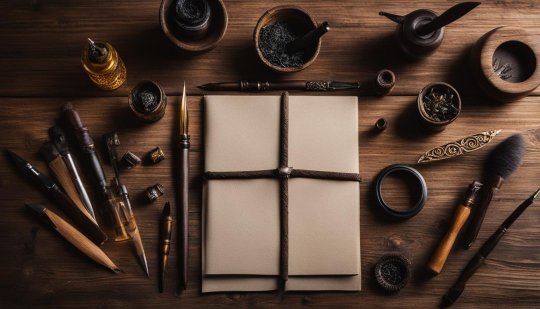
Handmade Calligraphy Tools Secrets Revealed: Elevate Your Writing to Art!
Handmade Calligraphy Tools offer a unique level of craftsmanship that adds a special touch to your artistic projects. With a wide range of tools available, including customized nib holders, handcrafted inkwells, artisanal calligraphy brushes, and DIY calligraphy pens, you can find the perfect tools to enhance your calligraphy experience. Whether it's using natural material nibs, handmade paper for calligraphy, or bamboo pen crafting, these tools are designed to bring out your creativity and add a personal touch to your projects.
Key Takeaways:
- Handmade Calligraphy Tools offer unique craftsmanship to elevate your artistic projects.
- Customized nib holders, handcrafted inkwells, and artisanal calligraphy brushes are essential tools for calligraphy enthusiasts.
- Handmade paper for calligraphy and bamboo pen crafting add a personal touch to your projects.
- Embrace the artistry of personalized pen stands, custom pen cases, and homemade calligraphy ink recipes to make your tools truly your own.
- Explore the world of handmade inks and paints to add depth and richness to your calligraphy.
Exploring the World of Handmade Pen Holders
Handmade pen holders are an essential part of the calligraphy experience, providing comfort and functionality. Customized nib holders allow you to personalize your pen for a comfortable grip, while handcrafted inkwells provide an elegant and convenient way to store your ink. Bamboo pen crafting adds a natural and sustainable element to your calligraphy tools, and hand-carved ink sticks offer a traditional and authentic way to create your own ink. These handmade tools bring a sense of artistry and individuality to your calligraphy practice.
When it comes to calligraphy, finding the perfect pen holder is crucial. Customized nib holders are designed to fit your hand perfectly, providing a comfortable grip for long writing sessions. You can choose from a variety of materials, such as wood or resin, and even have your name or initials engraved for a personalized touch. These nib holders not only enhance your writing experience but also add a touch of elegance to your workspace.
Handcrafted inkwells are not only functional but also serve as beautiful decorative pieces for your calligraphy setup. These inkwells are carefully designed and crafted by skilled artisans, using high-quality materials such as glass, ceramic, or wood. They come in various styles and sizes, allowing you to find the perfect inkwell that suits your aesthetic preferences.
In addition to nib holders and inkwells, bamboo pen crafting and hand-carved ink sticks offer unique options for calligraphers who appreciate traditional techniques. Bamboo pen crafting involves shaping and polishing bamboo into a pen, providing a lightweight and eco-friendly alternative to traditional pens. On the other hand, hand-carved ink sticks are made from natural materials, such as charcoal or animal glue, and are used to create ink by grinding them against an inkstone. These methods add a sense of authenticity and craftsmanship to your calligraphy practice.
Comparing Customized Nib Holders
Nib Holder
Material
Customization
Price
Wooden Nib Holder
Wood
Engraving available
$20
Resin Nib Holder
Resin
Various colors available
$15
Metal Nib Holder
Metal
Engraving available
$30
"Customized nib holders allow me to have a pen that fits my hand perfectly. The personalized touch adds a sense of ownership and inspires creativity in my calligraphy practice." - Calligraphy enthusiast
When exploring the world of handmade pen holders, you'll discover a wide range of options that cater to different preferences and styles. Whether you prefer customized nib holders, handcrafted inkwells, bamboo pen crafting, or hand-carved ink sticks, these unique tools are designed to enhance your calligraphy experience and bring a sense of artistry to your work. Embrace the craftsmanship and individuality of handmade calligraphy tools and unlock your creativity in the world of beautiful lettering.
Embracing Artisanal Calligraphy Brushes

Artisanal calligraphy brushes are a crucial tool for any calligraphy enthusiast. These meticulously crafted brushes are made with natural hair, ensuring the highest quality and precision in every stroke. Whether you prefer brushes made from squirrel, goat, or even horse hair, each type offers a unique texture and feel that can enhance your calligraphy experience.
Hand-shaped glass pens are another option worth exploring. These delicate and exquisite pens provide a different approach to traditional brushes, allowing for intricate details and precise lines in your calligraphy. With their transparent bodies, they also offer a visually captivating experience as you witness the ink flowing through the glass.
Traditional brush making is an art form in itself, often passed down through generations. By using age-old techniques, skilled artisans create brushes that combine functionality and aesthetics. Each brush is carefully shaped, balanced, and assembled to provide optimal control and a comfortable grip. Embracing these artisanal brushes will not only elevate your calligraphy but also connect you to the rich history and craftsmanship behind this timeless art form.
Brush Type
Natural Hair
Texture
Unique Features
Squirrel Hair
Yes
Soft and smooth
Perfect for delicate strokes and shading
Goat Hair
Yes
Springy and versatile
Ideal for both thick and thin lines
Horse Hair
Yes
Firm and resilient
Suitable for bold and expressive strokes
Glass Pens
No
N/A
Allows for intricate details and transparent ink flow
Whether you opt for natural hair brushes or hand-shaped glass pens, the choice ultimately depends on your personal preference and the effect you wish to achieve in your calligraphy. Experimenting with different tools and materials will enable you to discover your own unique style and unleash your creativity.
The Beauty of Handmade Paper for Calligraphy

When it comes to calligraphy, the choice of paper plays a crucial role in the overall look and feel of your artwork. Handmade paper, specifically designed for calligraphy, offers a unique blend of elegance and authenticity that can elevate your work to new heights.
Hand-pulled paper sheets, made by skilled artisans, provide a distinct texture and thickness that enhances the flow of ink and creates beautiful letterforms. The subtle irregularities in the paper's surface give each stroke a unique character, adding depth and visual interest to your calligraphy.
For those seeking a vintage and timeless feel, artisanal parchment offers an excellent choice. The aged appearance and warm hues of parchment evoke memories of ancient manuscripts, transporting your calligraphy back in time. The smooth surface of parchment allows the ink to glide effortlessly, resulting in clean and precise lines.
Table: Comparing Different Types of Handmade Calligraphy Papers
Handmade Paper Type
Description
Hand-pulled paper sheets
Unique texture and thickness enhance the flow of ink and create beautiful letterforms.
Artisanal parchment
Offers a vintage and timeless feel, reminiscent of ancient manuscripts.
Handmade calligraphy practice pads
Perfect for honing your skills and experimenting with different scripts.
Another option to consider is handmade calligraphy practice pads. These pads are specifically designed for practice and experimentation, allowing you to refine your skills and explore different scripts. The smooth and durable surface of the pads ensures that your pen glides effortlessly, making them ideal for both beginners and experienced calligraphers.
Whether you choose hand-pulled paper sheets, artisanal parchment, or handmade calligraphy practice pads, incorporating handmade paper into your calligraphy practice adds a sense of tradition and craftsmanship to your work. Each stroke on the unique surface of handmade paper becomes a testament to the artistry and dedication that goes into the creation of this specialized material. So, embrace the beauty of handmade paper and let it inspire your calligraphy.
Personalizing Your Calligraphy Tools
Adding a personal touch to your calligraphy tools can make your artistic journey even more special. With a variety of options available, you can personalize your pen stands, rulers, pen cases, ink recipes, and pen wraps to reflect your unique style and personality. These customized tools not only enhance your calligraphy experience but also make your workspace more visually appealing. Let's explore some exciting ways to personalize your calligraphy tools.
Personalized Pen Stands
A personalized pen stand is a stylish and functional accessory that adds a touch of elegance to your workspace. It provides a convenient and organized way to display your pens, keeping them easily accessible. You can have your name or initials engraved on the pen stand, making it a one-of-a-kind piece that showcases your individuality.
Personalized Calligraphy Rulers
A calligraphy ruler is an essential tool for achieving precise measurements in your lettering. By personalizing your ruler with your name or a meaningful quote, you can add a personal touch to this practical tool. Every time you use the ruler, it will remind you of your passion for calligraphy and inspire you to create beautiful letterforms.
Custom Pen Cases
Protecting your calligraphy tools is important, and a custom pen case is the perfect solution. You can choose a design that speaks to your aesthetic preferences and have your name or a special phrase embroidered on the case. Not only will it keep your pens safe but also add a personal touch to your tool collection.
Homemade Calligraphy Ink Recipes
Creating your own ink is a wonderful way to personalize your calligraphy experience. By experimenting with different recipes and adding unique colors and blends, you can make ink that is truly your own. Whether you prefer classic black ink or vibrant and unconventional shades, homemade calligraphy ink allows you to unleash your creativity and create stunning artworks.
Hand-Sewn Calligraphy Pen Wraps
A hand-sewn calligraphy pen wrap is a practical and stylish accessory for storing and transporting your pens. You can choose fabrics that resonate with your personal style and have the wrap customized with your initials or a meaningful symbol. Not only will it keep your pens secure, but it will also add a touch of craftsmanship to your calligraphy practice.
Personalizing your calligraphy tools is a wonderful way to make them truly your own. Whether it's a personalized pen stand, ruler, pen case, ink recipe, or pen wrap, these personalized touches add a unique flair to your workspace and reflect your individuality as an artist. So, unleash your creativity and let your personality shine through your calligraphy tools.
Handmade Ink and Paint for Calligraphy
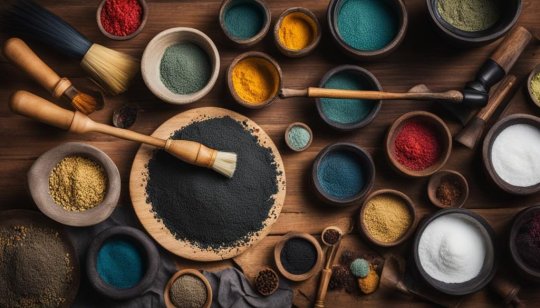
Adding a touch of artistry to your calligraphy, handmade inks and paints bring depth and richness to your lettering. With a range of options available, from hand-mixed inks to natural pigment inks, you can create custom colors and experiment with different shades. Homemade calligraphy ink recipes allow you to unleash your creativity and develop unique color blends. And if you're looking for a comprehensive ink-making experience, artisanal ink-making kits provide all the tools and materials you need to craft high-quality inks.
"Handmade inks and paints are a testament to the artistry and craftsmanship of calligraphy. The unique colors and textures they offer add a personal touch to your work, making each piece truly one-of-a-kind." - Calligraphy Master
Whether you prefer to hand-mix your inks, use natural pigments, follow homemade recipes, or explore the world of artisanal ink-making, these handmade options allow you to enhance your calligraphy practice and create stunning artistic pieces. The vibrant hues, exquisite textures, and endless possibilities of handmade inks and paints will inspire you to push the boundaries of your creativity and achieve truly remarkable results in your calligraphy.
Benefits of Handmade Inks and Paints for Calligraphy
- Custom colors and shades
- Unique textures and finishes
- Artistic and personalized touch
- Endless creative possibilities
- Enhanced depth and richness
Handmade Ink Options
Features
Hand-mixed inks
Customizable colors and blends
Natural pigment inks
Vibrant colors derived from natural sources
Homemade calligraphy ink recipes
Opportunity to create unique colors
Artisanal ink-making kits
Comprehensive set for crafting high-quality inks
Exploring Traditional Calligraphy Tools

Traditional calligraphy tools have a timeless appeal that continues to captivate artists. The use of traditional quill pens evokes a sense of classic elegance, reminiscent of the days of Shakespeare and Renaissance script. These pens, made from bird feathers and carefully crafted, provide a sophisticated writing experience.
Another traditional tool that adds a unique touch to calligraphy is hand-carved calligraphy stamps. These stamps allow you to create intricate and personalized designs in your calligraphy, adding a decorative element to your work. Each stamp is a work of art in itself, showcasing the craftsmanship and skill of the creators.
In addition to quill pens and calligraphy stamps, hand-forged metal nibs are a popular choice among calligraphers seeking precision and durability. These nibs allow for fine details in lettering and provide a consistent flow of ink. Made using traditional metalworking techniques, they are a testament to the artistry involved in creating calligraphy tools.
For those who prefer a more traditional approach, hand-cut quills offer a unique and authentic way to create beautiful and expressive calligraphy strokes. These quills are painstakingly cut and shaped by hand, ensuring the perfect balance and flexibility for your writing needs.
To summarize, traditional calligraphy tools such as quill pens, calligraphy stamps, metal nibs, and hand-cut quills provide a connection to the rich history of the craft. Incorporating these tools into your calligraphy practice allows you to embrace the traditional art form and express your creativity in a timeless manner.
Table: Comparing Traditional Calligraphy Tools
Tool
Features
Advantages
Traditional Quill Pens
Handcrafted from bird feathers
Elegant writing experience
Hand-Carved Calligraphy Stamps
Intricate designs
Personalized decorative elements
Hand-Forged Metal Nibs
Precision and durability
Consistent flow of ink
Hand-Cut Quills
Authentic and expressive strokes
Perfect balance and flexibility
Showcasing Artistry in Penmaking
https://www.youtube.com/watch?v=QTsauc7iHyo
When it comes to calligraphy, the tools you use can make a significant difference in the quality and beauty of your work. Handmade calligraphy tools, such as hand-turned wood nib holders, hand-shaped glass pens, hand-carved calligraphy stamps, and handmade calligraphy stencils, showcase the artistry and craftsmanship involved in penmaking. These unique tools not only add a touch of elegance to your calligraphy practice but also provide you with a personalized and artistic experience.
Hand-turned wood nib holders are a popular choice among calligraphers who appreciate the warmth and natural beauty of wood. These nib holders are carefully crafted by skilled artisans, allowing for a comfortable and unique grip. The combination of the smooth wood surface and the weight of the holder enhances your control and precision while writing.
Hand-shaped glass pens, on the other hand, offer a delicate and exquisite alternative to traditional nibs. These pens are crafted by skilled glass artisans, creating a beautiful and functional tool for calligraphy. The transparent glass allows you to see the ink flow, adding a visual element to your writing process. The smooth and tapered tip of the glass pen provides a fluid and effortless writing experience, allowing you to create graceful strokes and intricate details.
Hand-carved calligraphy stamps offer a way to incorporate unique and personalized designs into your calligraphy. These stamps are meticulously carved by skilled artisans, resulting in intricate and beautiful patterns. By using these stamps in your work, you can add decorative elements and create visually stunning compositions.
In addition to nib holders, glass pens, and stamps, handmade calligraphy stencils are another valuable tool for calligraphers. These stencils are carefully crafted to provide you with precise guidelines and letterforms, ensuring consistency and accuracy in your writing. Whether you are a beginner looking to improve your lettering or an experienced calligrapher seeking new styles, these stencils can be a valuable addition to your toolkit.
Hand-Turned Wood Nib Holders
Hand-Shaped Glass Pens
Hand-Carved Calligraphy Stamps
Handmade Calligraphy Stencils
Enhances control and precision
Offers a delicate and exquisite alternative
Adds unique and personalized designs
Provides precise guidelines and letterforms
Constructed with warm and natural wood
Create graceful strokes and intricate details
Meticulously carved by skilled artisans
Ensures consistency and accuracy in writing
Unique and personalized grip
Provides a fluid and effortless writing experience
Offers visually stunning compositions
A valuable tool for beginners and experienced calligraphers
Incorporating these handmade calligraphy tools into your practice not only enhances the quality of your work but also allows you to showcase your artistic flair.
Read the full article
0 notes
Photo
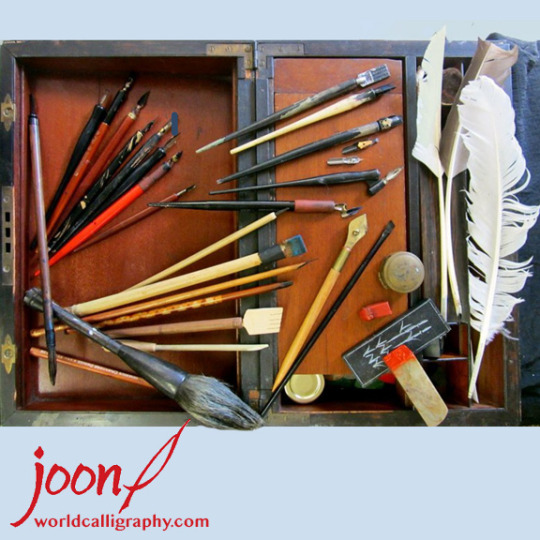
My writing tools, including quills, reed pens (qalam ney), Chinese brushes, sign painting brush and assorted metal nibs (broad nib, copperplate, quill, wire brush, etc.). These are a sampling of the well-used tools of my daily life as a calligrapher. They are displayed on an antique writing desk from India from the time of the British Raj, which features multiple compartments and closes up as a convenient–if somewhat heavy by modern standards–box. It was decades ago, to be honest. A friend and I spotted both the ebony black box at the same moment. It was perched on a high shelf in Doma’s old shop in Mussoorie, India, and we had a friendly argument over who had seen it first. I must say I pushed harder than was my usual habit. Even then I knew that calligraphy was going to be a big part of my life, and who should have the writing box but the calligrapher. It still accompanies me to calligraphy demonstrations and workshops and is only slightly worse for the wear!
S J Thomas
https://worldcalligraphy.com
#calligraphy#calligraphydesk#travellingdesk#travelingdesk#calligraphytools#qalam#pen#brush#quill#india#mussoorie#domas#british raj#calligrapher#khat
1 note
·
View note
Text
Calligraphy engraving with Sensationz
Know Calligraphy
You are probably familiar with the term calligraphy. There is more to this term than just writing a nice letter. Calligraphy is an art that requires you to possess certain skills and techniques in which letters are transformed into artistic lettering that harmonizes with each other. Calligraphy is not just about beautiful handwriting. Even if you are not good at writing, you can learn calligraphy. Each letter is written slowly and neatly, so it takes a lot of patience to master the art. It also requires meticulous attention to detail. Calligraphy is the process of transforming something as simple as handwriting into a sophisticated art form.
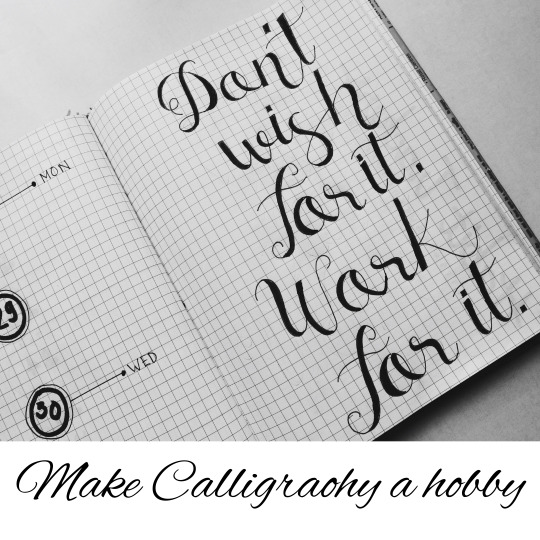
Origin
Calligraphy's origins date back to 200 BC. in China. In addition to China, Japan, India, Europe, and South Korea are deeply rooted in calligraphy from a historical perspective. Calligraphy is not only considered beautiful handwriting, but it is also an important part of regions such as the Middle East and East Asia. The printing press was introduced to Europe in the mid-15th century and marked the distinction between ordinary handwritten or handwritten characters and elaborate forms of writing. The word calligraphy was introduced into many European languages in the 16th century, and English calligraphy appeared in the early 17th century.
1. Western calligraphy:
Western calligraphy is influenced by the Greek and Latin alphabetAround 3000 BC, the Romans used reeds and quills to write on papyrus, but it was also used for biblical texts and various other manuscripts. Calligraphy experienced a resurgence in the 19th century with the initiation of calligraphy education courses in London. Western calligraphy uses calligraphy pens, flat pens, and round pens. Biblical manuscripts are a prime example of Western calligraphy

2. Oriental calligraphy
Oriental calligraphy is heavily influenced by Chinese calligraphy. East Asian cultures boast a rich and complex history of calligraphy. In the East, calligraphy tools are called the four treasures of learning, and the four treasures are brushes, ink, paper, and inkstones. Oriental calligraphy uses a variety of brushes, inks, and papers. Palm leaves, clay, and bark are used as calligraphy surfaces.
3. Arabic calligraphy:
Compared to other calligraphy, Arabic and Islamic calligraphy are different. This form of calligraphy is closely related to religious and Islamic geometric art. In a way, it is a visual representation of the art of the spiritual world.
Get to know the tools
There are various brushes, pens, nibs, and inks used to create beautiful calligraphy. Some of the different types of devices used in the art of calligraphy are:

Broad Edge Pen
Easy to use, perfect for beginners. This creates the popular thick and thin lines in Western alphabets. This pen is used for many styles, but it requires some tricks to get the desired result. Broad edge pens include dip pens, automatic pens, and fountain pens.
Pointed Pens: These types of pens do not inherently create thick or thin lines, but the pressure applied by the writer determines these elements. Working with this pen requires a bit of patience, as the line thickness of the pen depends solely on the pressure the writer applies and releases.
Ruler Pen: The ruler pen has a knob on the side. It marks the closeness of the blade thickness and thinness and can be adjusted with a knob.
Pointed Brushes: Pointed brushes come in a variety of shapes, sizes and bristle lengths.This versatile tool allows you to create interesting textures and lines
Wide Edge Brush: Best for surfaces such as fabric and thin Japanese paper. You can also make big letters on the wall.
Nibs: They come in a variety of shapes and sizes, each releasing different inks to create different types of lines.
Inks: Dyes, pigments, and carbon-based inks are used in calligraphy. Carbon-based inks are long-lasting and won't fade over time. Dye ink is fluffy and easy to handle, so it is recommended for beginners.
Conclusion
Calligraphy is a beautiful art to learn. It's easy if you really want to learn. Calligraphy as art is relatively easy to learn but difficult to master. It takes years of practice to master the art and master all the techniques. If you're interested in learning this art, now is a good time to start. Online calligraphy courses are available for those who want to learn this art. To get proper guidance or to take calligraphy classes visit sensationz media and arts
#calligraphy#calligraphyforbegginer#calligraphyclasses#calligraphylearning#calligraphytools#calligraphyfonts
1 note
·
View note
Photo
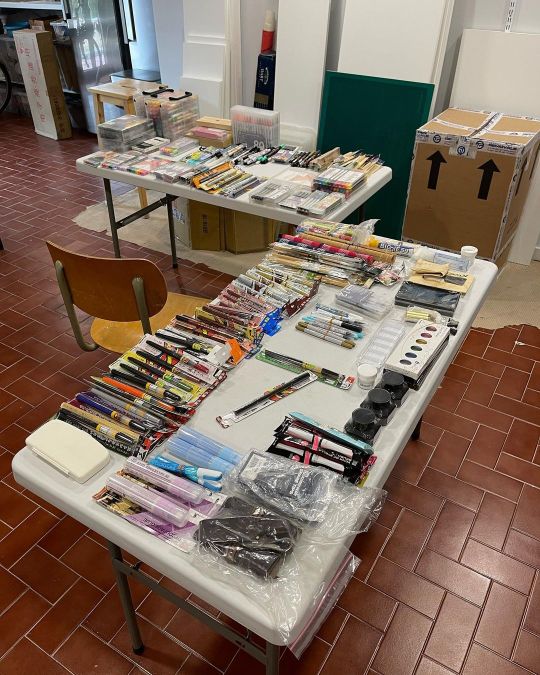
Today was @kuretakejapan box sorting. This is 1/2 of my Kuretake Zig products. I say 1/2, this is the small stuff. There are 14 MASSIVE boxes of #zigposterman markers in various sizes. Putting them in order for a huge testing project I am planning so you can see what they can be used for. Thank you @kuretakejapan and @kuretakezig_usa for being so generous with me. And thank you to all the Zig Distributors I have had the honour and pleasure to work with over the years. @zigphilippines @kuretakezig_taiwan @kuretakezigmy @kuretakezig_hongkong @zigkuretake_id @kuretakezig_singapore @kuretakezig_france @zigturkiye @kuretakezig_australia @pascribe #pascribe #pascriber #calligraphy #ligatures #flourishing #copperplate #spencerian #ligatures #pointedpen #writing #handwriting #handwritten #formal #traditional #lecture #workshop #learning #caligrafia #portugalcaligrafia #calligraphytools #markers #brushpens (at Setúbal) https://www.instagram.com/p/CdDfNBuMV0k/?igshid=NGJjMDIxMWI=
#zigposterman#pascribe#pascriber#calligraphy#ligatures#flourishing#copperplate#spencerian#pointedpen#writing#handwriting#handwritten#formal#traditional#lecture#workshop#learning#caligrafia#portugalcaligrafia#calligraphytools#markers#brushpens
0 notes
Text

🔥 Enamel Cloisonné Bronze Calligraphy Brush Water Drop Thumb Pitcher 🔥
For sale 🔥 https://Busacca.Art/
See Wonderful Rare `Eclectic Collectibles at 🔥 Busacca Gallery
#Art #Collection #ArtCollection #Collectibles #Calligraphy #CalligraphyTool #WaterContainer #WaterTool #CalligraphyArt #ArtsAndCrafts #Gallery #Designer #InteriorDesigner #Display #ArtAndDisplay #Decor #OfficeDecor #ArtistStudio #Artist #CalligraphyArtist #ArtDesigner #Museum #Curator #ArtCurator #Architects #ArchitecturalDesign #ArchitecturalDecor
1 note
·
View note
Photo

The Brause 361 nib is a nib I like to recommend for beginners and I use it regularly in my workshops. It’s sturdy but still gives nice hairlines, lasts quite a while and will work well with a wide variety of inks (including gouache and metallics). Also you can get pretty thick swell strokes without it being too difficult for the more heavy-handed! It made me smile when I first heard this nib called a »Blue Pumpkin« in English! Probably because its blue dye and round and rather big form? :: Did you know that another name for the nib in German is »Steno Feder«? Stenography or Shorthand is used to write quicker than with regular script – using abbreviated signs and / or symbols. Some can be written more than 10 times faster than writing alphabetically, so people in court for example are able to record someone’s speech in real time! I did some online research, it’s a fascinating topic – alone in Germany existed over the centuries about 800 to 900 different shorthand systems! The first ones were used already in Antique Greece, and also many non-Western writing systems have their shorthands – on the Wikipedia entry you’ll find (among others) pictures of Hebrew and Chinese shorthands (I’m attaching here German, Hebrew, English and Chinese examples). :: Back to my humble Brause Steno nib – the reason it’s a flexible nib is because line pressure indicates meaning in the German shorthand it is meant to be used for. Apparently most modern day practitioners use pencils to make these pressured strokes – but isn’t it nice we can use this practical nib to write calligraphy too ☺️? :: #calligraphy #kalligraphie #kalligrafie #caligrafia #nib #feder #brausefeder #stenofeder #brausenib #bluepumpkin #shorthandnib #historyofwriting #stenografie #shorthand #stenography #calligraphytools #handwerkszeug #flourishforum #federflugcalligraphy https://www.instagram.com/p/CO7sDaAgp81/?igshid=6myfp7huxaqr
#calligraphy#kalligraphie#kalligrafie#caligrafia#nib#feder#brausefeder#stenofeder#brausenib#bluepumpkin#shorthandnib#historyofwriting#stenografie#shorthand#stenography#calligraphytools#handwerkszeug#flourishforum#federflugcalligraphy
21 notes
·
View notes
Photo

A little rainbow lettering with my new @tombow_uk @tombowusa Fudenosuke Color brush pens 😍 I was waiting so long for this pens to be exist and they finally do and I can creat with them. 💕 I will definitely take this BADASS pens to my holiday 🌈❤️ Did you try them?? How you like them?? 🌈😊 • • Made this for #characterlettering with @journeyofapen 💕 • • Materials I used: @tombow_uk @tombowusa Fudenosuke Color hard brush tip pen @rhodiapads paper • • #agnescalligraphy #moderncalligraphy #calligraphy #makersgonnamake #50words #risingtidesociety #goodtype #designspiration #oddlysatisfying #calligraphytools #calligraphymasters #artoftype #artofvisual #letteringchallenge #thedailycalligraphy #fineartcalligraphy #asmr #luxe #worldofartist #tombowdualbrushpens #tombow #tombowfudenosuke #tombowfudenosukecolors #positivemindpositivelife #positivevibes #brushpencalligraphy #brushpenlettering (at London, United Kingdom) https://www.instagram.com/p/BqKt4uInHVl/?utm_source=ig_tumblr_share&igshid=178wlteqeoxkw
#characterlettering#agnescalligraphy#moderncalligraphy#calligraphy#makersgonnamake#50words#risingtidesociety#goodtype#designspiration#oddlysatisfying#calligraphytools#calligraphymasters#artoftype#artofvisual#letteringchallenge#thedailycalligraphy#fineartcalligraphy#asmr#luxe#worldofartist#tombowdualbrushpens#tombow#tombowfudenosuke#tombowfudenosukecolors#positivemindpositivelife#positivevibes#brushpencalligraphy#brushpenlettering
5 notes
·
View notes
Photo
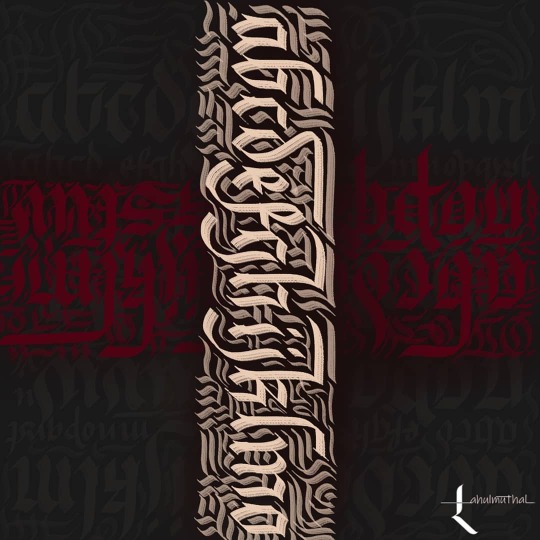
Experiments with Frakture on Procreate #procreateillustration #mycalligraphy #माझीअक्षरकला #माझीअक्षरे #mylove #myart #calligraffiti #calligraphypractice #calligraphylove #calligraphylettering #calligraphy #calligraffiti #art #experimentalart #lettering #letterlove #letterdrawing #contemporaryart #calligraphy #calligraphytools #ink#explore #procreateartist (at Bangalore, India) https://www.instagram.com/p/CSQwAKpMtdD/?utm_medium=tumblr
#procreateillustration#mycalligraphy#माझीअक्षरकला#माझीअक्षरे#mylove#myart#calligraffiti#calligraphypractice#calligraphylove#calligraphylettering#calligraphy#art#experimentalart#lettering#letterlove#letterdrawing#contemporaryart#calligraphytools#ink#explore#procreateartist
0 notes
Photo

Some giant Roman tonight, written using Speedball C0 & Japanese Inkstick Terrible paper by the way 😬 . #huyhoangdao #calligraphy #penmanship #handwriting #lettering #typography #flourishing #birdflourishing #copperplate #spencerian #pointedpen #obliqueholder #iampeth #vsco #photography #roman #learncalligraphy #calligraphytools
#pointedpen#spencerian#huyhoangdao#iampeth#learncalligraphy#handwriting#calligraphy#vsco#photography#penmanship#typography#lettering#copperplate#birdflourishing#flourishing#obliqueholder#roman#calligraphytools
5 notes
·
View notes
Photo

Sun is shining and so are you.😋 . . . #dailycalligraphy #calligraphy #calligraphynewbie #moderncalligraphy #letteringcommunity #calligraphylettering #dailylettering #modernlettering #domsbrushpens #mydomsart #brushpendrawing #cursivehandwriting #artoninstagram #theartsylady #artforhome #mondaymotivations #creativewriting #handletteringdaily #letteringwithpositivity #calligraphytools #calligraphymaster https://www.instagram.com/p/CEiY3WcFthI/?igshid=b1r5lhuyvfpp
#dailycalligraphy#calligraphy#calligraphynewbie#moderncalligraphy#letteringcommunity#calligraphylettering#dailylettering#modernlettering#domsbrushpens#mydomsart#brushpendrawing#cursivehandwriting#artoninstagram#theartsylady#artforhome#mondaymotivations#creativewriting#handletteringdaily#letteringwithpositivity#calligraphytools#calligraphymaster
0 notes
Photo

My favourite tool for calligraphy is pilotparallelpen ☺️ Which is your favorite tool for calligraphy? What is your desire in Calligraphy? Script :-Gothic calligraphy Material used :- -pilotparallelpen -pilotparallelpen catridge red and black .140 GSM Textured paper . For more calligraphy @zahidakram99 . #zahidcalligraphy #zahidartsandcalligraphy #theartisticrevolution #pilotparallelpen #pilotparallelpens #pilotpens #pens #calligraphytools #calligraphypens #calligraphy #indiancalligraphy #oddlysatisfying #calligraphymasters #handlettering #handletteringpractice #calligraphypractice #calligraphyvideo #typography #calligraphygang #letteringart #calligraffti #lettering #kaligrafi #artistsoninstagram #globallettering #indianpenmanship #calligraphyindia #artoftype @calligraphymasters @calligraphy_daily_ @calligraphygang @thecalligraphyhub @lettering_daily @calligraphyvideo @type.gang @pilotpenitalia @pilot_india @pilotpenusa @pilotpennz @pilotpenuk @pilotcorporationofeurope @pilotpensg @pilotbenelux @pilotpenmx @pilotnordic @pilot_corporation @pilotpensg @pilotpensphilippines @pilotchile @pilotpenau @pilot_pen_deutschland (at Hyderabad) https://www.instagram.com/p/CEXHWdBl-F-/?igshid=mffn5d18ajm4
#zahidcalligraphy#zahidartsandcalligraphy#theartisticrevolution#pilotparallelpen#pilotparallelpens#pilotpens#pens#calligraphytools#calligraphypens#calligraphy#indiancalligraphy#oddlysatisfying#calligraphymasters#handlettering#handletteringpractice#calligraphypractice#calligraphyvideo#typography#calligraphygang#letteringart#calligraffti#lettering#kaligrafi#artistsoninstagram#globallettering#indianpenmanship#calligraphyindia#artoftype
0 notes
Text
Calligraphy Rulers and Guides: Precision in Every Line
Calligraphy Rulers and Guides Unveiled: Master the Art of Perfect Lines!
Welcome to our guide on calligraphy rulers and guides! If you're passionate about calligraphy and strive for perfection in every stroke, these tools are a must-have in your collection. Calligraphy rulers and guides provide the precision and consistency you need to create beautifully crafted lettering. Let's dive into the world of calligraphy rulers and guides and discover how they can take your artwork to the next level.
Key Takeaways:
- Calligraphy rulers and guides ensure perfectly straight and parallel guidelines in your projects.
- Consistency and precision are achieved by using these tools, resulting in evenly spaced and well-proportioned lettering.
- The INKMETHIS Layout Liner is a popular tool for versatility and accuracy in calligraphy projects.
- Guidelines are essential for maintaining consistency and achieving a neat and elegant script.
- Understanding different calligraphy guidelines, such as x-height and slant lines, is crucial for creating consistent and well-proportioned lettering.
Now that we have a glimpse of how calligraphy rulers and guides can enhance your work, let's explore their importance in more detail.
The Importance of Guidelines in Calligraphy
Guidelines are crucial in calligraphy as they help maintain consistency and ensure that the letters are evenly spaced and proportioned. Without guidelines, it can be challenging to achieve neat and elegant script, especially in traditional calligraphy scripts that have specific rules on letter ratios and slants. Guidelines provide a framework for the letters, keeping the height, proportion, and slant consistent throughout the piece. They serve as a reference point for maintaining the correct angle while writing. Whether you are a beginner or an experienced calligrapher, using guidelines is essential to produce high-quality work.
Using guidelines in calligraphy helps you create a consistent and professional-looking script. It ensures that each letter is placed correctly and uniformly, resulting in a visually pleasing piece. Guidelines act as a guide for letter heights, proportions, and angles, allowing you to maintain a consistent style throughout your work. With guidelines, you can achieve the desired spacing between letters and words, avoiding overcrowding or uneven gaps. By following these guidelines, you can produce calligraphy that is visually appealing, balanced, and easy to read.
The use of guidelines is particularly important for maintaining consistency in traditional calligraphy scripts. These scripts have specific rules and proportions that define their style. Guidelines help you adhere to these rules, ensuring that the calligraphy retains its traditional appearance. In addition to traditional scripts, guidelines are also beneficial for modern calligraphy styles, as they help you maintain a consistent look and feel across different projects. Whether you are working on wedding invitations, certificates, or artistic pieces, guidelines provide a solid foundation for your calligraphy work.
Understanding Calligraphy Guidelines

Calligraphy guidelines are an essential component of creating consistent and well-proportioned lettering. They consist of various lines that determine the height, proportion, and slant of the letters. Let's explore the different components of calligraphy guidelines:
X-height space
The x-height space refers to the area between the baseline and the waistline. It determines the height of lowercase letters and plays a crucial role in maintaining uniformity throughout the script.
Ascender space
The ascender space is the area above the waistline and is utilized for letters with ascender loops, such as 'b' and 'h.' This space ensures that the loops are consistent in height and maintain the overall balance of the script.
Descender space
The descender space is the area below the baseline and is used for letters with descender loops, such as 'g' and 'y.' It allows for uniformity in the length of these loops, creating a harmonious look in the script.
Copperplate calligraphy guidelines
Copperplate calligraphy, a popular script known for its elegant and flowing style, has specific guidelines for each component. These guidelines ensure that the letters are proportioned correctly, maintaining the unique characteristics of Copperplate calligraphy.
Understanding these different lines and their roles is crucial for creating consistent and well-proportioned calligraphy. By following the guidelines, you can achieve precise and balanced lettering that enhances the overall aesthetic of your calligraphy piece.
Drawing Calligraphy Guidelines

When it comes to calligraphy, drawing accurate guidelines is crucial for creating neat and consistent lettering. Whether you're a beginner or an experienced calligrapher, having the right tools and techniques for drawing guidelines can make a significant difference in the quality of your work. Here are some helpful tips and tools for drawing calligraphy guidelines:
Tips for Drawing Guidelines
- Use a sharp pencil: A sharp pencil will allow you to make precise measurements and create clean, straight lines.
- Draw lightly: It's important to draw your guidelines lightly so that you can easily erase them later without damaging your paper or ink.
- Measure carefully: Take your time to measure the spacing and proportions of your guidelines accurately. Using a ruler or rolling ruler can help ensure straight lines.
- Allow ink to dry: If you're working with ink, make sure it is fully dry before erasing your guidelines to avoid smudging.
By following these tips, you can create well-defined and accurate guidelines that will serve as a foundation for your calligraphy work.
Tools for Drawing Guidelines
Pros
Cons
Ruler and pencil
- Easily accessible and affordable
- Can be used on any surface
- Ideal for beginners
- Manual measurement can be time-consuming
- Requires steady hand
Rolling ruler
- Allows for easy drawing of parallel lines
- Provides accurate measurements and angles
- May be more expensive than a traditional ruler
- Requires practice to get used to
Light pad
- Helps in tracing guidelines and drafts
- Saves time in drawing guidelines directly on paper
- Requires additional equipment
- Not suitable for all calligraphy styles
Each tool has its own advantages and disadvantages, so it's important to choose the one that suits your needs and preferences. Experimenting with different tools can also help you find the one that works best for you.
The Role of Guidelines in Consistency
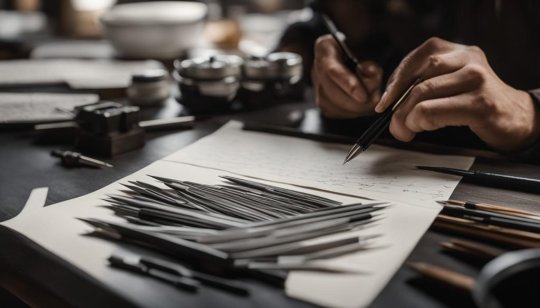
Consistency is a key aspect of creating a neat and professional-looking calligraphy script. Using guidelines is a fundamental practice that helps you achieve this consistency. Guidelines serve as a reference point for maintaining the correct height, proportion, and slant of your letters. They provide a framework for aligning each character in a uniform manner, ensuring that your script appears balanced and well-executed.
By following guidelines, you can avoid the pitfalls of uneven spacing and misshapen letterforms. They act as a visual guide, allowing you to place each stroke with precision and intention. Whether you're working on a traditional calligraphy script or a modern style, utilizing guidelines will help you achieve a consistent and polished result.
Using guidelines is especially important for beginners who are still developing their muscle memory and understanding of letterform structures. They provide a helpful framework for practicing and honing your calligraphy skills. With regular use of guidelines, you can gradually improve your consistency and create a more refined and visually appealing script.
In addition to maintaining consistency, guidelines also allow for artistic expression and experimentation. Once you have mastered the fundamentals, you can start customizing your guidelines to suit your unique style and creative choices. Breaking traditional rules and exploring different ratios can add a personal touch to your calligraphy and make it stand out.
Benefits of Using Guidelines for Consistent Script
Ensures uniform spacing and proportion
Helps maintain a balanced and polished appearance
Aids muscle memory development and skill improvement
Allows for artistic expression and customization
Summary:
Guidelines play a crucial role in achieving consistency in calligraphy. They act as a visual reference for maintaining the correct height, proportion, and slant of your letters. By following guidelines, you can create a neat and professional-looking script with evenly spaced characters. Beginners can benefit from using guidelines to develop their skills, while experienced calligraphers can use them as a framework for artistic expression. Embrace the power of guidelines to elevate your calligraphy and create beautiful works of art.
Customizing Calligraphy Guidelines
When it comes to calligraphy, guidelines serve as a foundation for creating consistent and well-proportioned lettering. While there are standard ratios for calligraphy guidelines, such as the 2:1:2 or 3:2:3 ratio in Copperplate calligraphy, you also have the flexibility to customize the guidelines to suit your creative choices. Breaking traditional rules and experimenting with different ratios can add a unique touch to your calligraphy practice.
When customizing calligraphy guidelines, you can try out different ratios such as 1:1:1, 1:2:1, or even unconventional combinations. This allows you to explore new possibilities and create lettering that reflects your personal style. Additionally, using grid sheets or guidesheets with multiple ratio options can help you adapt to different calligraphy scripts and lettering styles.
Customizing your calligraphy guidelines not only provides creative freedom but also encourages you to think outside the box and push the boundaries of traditional calligraphy. By breaking the rules, you can create unique and captivating pieces that stand out.
Benefits of Customizing Calligraphy Guidelines
- Uniqueness: Customizing your guidelines allows you to create calligraphy that is truly one-of-a-kind, showcasing your individuality and creativity.
- Exploration: Breaking traditional rules in calligraphy opens up a world of possibilities, encouraging you to experiment with different lettering styles and techniques.
- Personalization: Customized guidelines help you tailor your calligraphy to suit specific projects or themes, adding a personal touch to your work.
- Creative Expression: By customizing guidelines, you can express your artistic vision and create calligraphy that resonates with your intended audience.
Customizable calligraphy guidelines provide the freedom to explore and create unique lettering that reflects your individuality. Breaking traditional rules and experimenting with different ratios allows for artistic expression and personalization in your calligraphy practice. So go ahead, unleash your creativity, and let your calligraphy shine with customized guidelines.
Using Guidelines for Calligraphy Practice
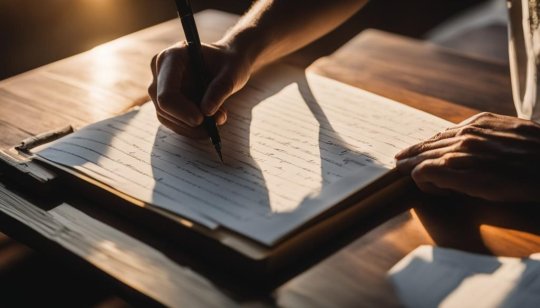
Practicing calligraphy with guidelines is a proven method for improving your lettering skills and achieving consistency in your strokes. Guidelines provide a visual reference for letter placement, height, and proportion, enabling you to create a neat and professional-looking script. By using calligraphy practice sheets with guidelines, you can focus on perfecting your technique while maintaining a consistent script.
Calligraphy practice sheets with guidelines are readily available in PDF format, allowing you to start practicing immediately. These practice sheets feature pre-drawn guidelines, saving you time and effort. They provide a structured framework for practicing various letterforms, strokes, and flourishes. Regular practice with guidelines helps develop muscle memory, allowing you to write with more confidence and control.
The benefits of using calligraphy practice sheets with guidelines are numerous. They help you refine your lettering skills by providing a clear roadmap for consistent script execution. The guidelines serve as a visual anchor, allowing you to focus on each stroke and achieve uniformity. Additionally, practicing on guidelines can help you identify areas for improvement and make necessary adjustments to enhance your calligraphy technique.
Whether you're a beginner or an experienced calligrapher, incorporating guidelines into your practice routine is essential. They offer structure and guidance, enabling you to progress from basic letterforms to more intricate compositions. With regular practice using calligraphy practice sheets with guidelines, you can strengthen your skills, build confidence, and create stunning pieces of calligraphic art.
Table: Comparison of Different Calligraphy Practice Sheets
Practice Sheet
Features
Price
Beginner's Practice Sheets
- Basic letterforms and stroke practice
- Step-by-step instructions
- Suitable for beginners
$5
Intermediate Practice Sheets
- Advanced letterforms and flourishes
- Drill exercises for improving technique
- Varied complexity levels
$8
Advanced Practice Sheets
- Challenging compositions and layouts
- Emphasis on artistic expression
- Ideal for experienced calligraphers
$12
Erasing Guidelines in Calligraphy
https://www.youtube.com/watch?v=mmaJWx6hVHY
When working with calligraphy guidelines, it is crucial to erase them properly to create a clean and finished piece. Before erasing, ensure that the ink has fully dried to avoid smudging. Thicker inks like gouache or Bleedproof White may require more time to dry completely. It is recommended to leave the ink overnight or longer to ensure it is fully dry. Erasers specifically designed for calligraphy can be used to remove the guidelines without damaging the paper or the ink.
If you used a light pad for tracing drafts, the guidelines will not need to be erased, as they are only visible when the light pad is turned on. This can be a convenient method for preserving the original guidelines while working on your calligraphy projects. However, if you prefer to have a clean sheet without any visible guidelines, you can use a light touch with an eraser to gently remove them.
Remember to be cautious while erasing to avoid smudging or damaging the surrounding areas of your calligraphy. Take your time and erase in small, controlled motions to ensure a clean result. It's always a good idea to practice erasing on a separate piece of paper before working on your final calligraphy piece.
Tips for Erasing Calligraphy Guidelines:
- Ensure the ink is completely dry before erasing to avoid smudging.
- Use an eraser specifically designed for calligraphy to remove the guidelines without damaging the paper or the ink.
- If using a light pad for tracing drafts, the guidelines can be preserved without the need for erasing.
- Take your time and erase in small, controlled motions to avoid smudging or damaging the surrounding areas.
- Practice erasing on a separate piece of paper before working on your final calligraphy piece.
By following these tips, you can confidently erase calligraphy guidelines and achieve a clean, professional finish in your calligraphy projects.
Calligraphy Guidelines for Different Scripts
Calligraphy guidelines play a crucial role in creating consistent and well-proportioned lettering across different calligraphy scripts. Each script may have specific guidelines that need to be followed to achieve the desired style and aesthetics. Let's explore the specific guidelines for Copperplate calligraphy and bouncy modern scripts.
Copperplate Calligraphy Guidelines
Copperplate calligraphy is known for its elegant and flowing script. To create Copperplate letters, specific guidelines need to be followed. These guidelines include:
- Baseline: This marks the bottom of the x-height and serves as the starting point for each letter.
- Waistline: This marks the top of the x-height and determines the height of the lowercase letters.
- Ascender Line: This line indicates the height of letters with ascender loops, such as "h" and "l".
- Descender Line: This line determines the height of letters with descender loops, such as "g" and "y".
- Slant Line: Copperplate calligraphy has a specific slant angle, typically around 55-60 degrees, which adds to the unique look of the script.
Guidelines for Bouncy Modern Scripts
Bouncy modern scripts are characterized by their playful and whimsical letterforms, often with exaggerated loops and flourishes. While these scripts allow for more creative freedom, there are still some guidelines to consider:
- Baseline: Similar to Copperplate calligraphy, the baseline marks the bottom of the x-height and provides a starting point for each letter.
- Waistline: The waistline determines the height of lowercase letters and helps maintain consistency in letter sizing.
- Loose Proportions: Unlike traditional scripts, bouncy modern scripts often have varying proportions, allowing for exaggerated loops and flourishes.
- Dynamic Baseline: Bouncy modern scripts may feature a dynamic baseline that curves and flows, adding movement and liveliness to the letterforms.
Understanding and following the guidelines specific to each calligraphy script is essential for achieving consistent and visually appealing results. Whether you're working with elegant Copperplate or playful bouncy modern scripts, these guidelines will help you create stunning calligraphy pieces.
Calligraphy Script
Specific Guidelines
Copperplate Calligraphy
- Baseline
- Waistline
- Ascender Line
- Descender Line
- Slant Line
Bouncy Modern Scripts
- Baseline
- Waistline
- Loose Proportions
- Dynamic Baseline
Tools for Drawing Calligraphy Guidelines
When it comes to drawing calligraphy guidelines, having the right tools can make a significant difference in the accuracy and precision of your work. Two essential tools that can aid in creating perfect calligraphy guidelines are rolling rulers and light pads.
Read the full article
0 notes
Photo

A pen cut from a reed has been used since the beginning of writing. But reeds only grow so big.
What to do when you need a larger writing tool? The Jali (Celi) or Tomar Qalam is mostly known to calligraphers who work in Arabic, Persian or Urdu calligraphy, but the pens can be used for many other scripts and lettering styles.
The pens are handmade from a sharpened nib of hardwood. The cuts and drilled holes serve as ink reservoirs. Allow me to give a shout out to Josh Berer at https://arabiccalligraphysupplies.com/ who made this beautiful set of pens with the nice hand-turned wood handles.
I will say that using these tools is tricky, but with practice you can get nice crisp calligraphic lettering.
For calligraphy products or to commission calligraphic art see my new website: WorldCalligraphy.com
#calligraphy#persiancalligraphy#arabiccalligraphy#iraniancalligraphy#urducalligraphy#calligraphytools#lettering#letteringtools#calligraphypens#qalam
0 notes
Video
Happy mail day: getting packages from @notjustacard! Cyrus sent me the @aquino_da_silva calligraphy ruler to test and I LOVE IT. . If you’ve followed me for a while you know I’m a huge fan of the Ames Lettering Guide; but I think that for my purposes, this is actually better. It’s all in metric, for one thing 😂 American measurements have never made much sense to me so I’m stoked that this goes up in easy 1mm increments from 3mm x-height to 7mm. . You get a choice of whether you want a 2:1:2 or 3:2:3 ascender/descender ratio - or you can just rule five parallel lines at a time and pick your own x-height. . But the 55° angle ruler is the best part. Sure, you can do that with a protractor - but that’s an extra ten seconds 😂 this makes it super easy and will definitely be becoming part of my everyday toolkit. @notjustacard sent me this one free of charge to review but I already want to buy another just in case I lose it 🤭 #hoarder . In Australia they are exclusively available at @notjustacard’s online store - click through the link in his bio. Overseas I’m not sure but maybe someone can help in the comments? . . . . #calligraphy #notjustacard #aquino_da_silva #calligraphyruler #calligraphytools #learncalligraphy #productreview #lovemyjob #calligraphylife #calligraphynerd #melbourne #calligraphyshop #calligraphyau
#learncalligraphy#hoarder#calligraphytools#productreview#calligraphylife#lovemyjob#melbourne#notjustacard#calligraphy#calligraphyshop#calligraphynerd#aquino_da_silva#calligraphyruler#calligraphyau
3 notes
·
View notes
Photo

#lascala #logotype #writing #calligraphy #graphicdesigner #storytellingletters2020 #calligrapher #calligraphy_art #calligraphie #pen #calligraphytools #papercrafting https://www.instagram.com/p/CBZEIatpMk0/?igshid=7qxsgcq0cwfc
#lascala#logotype#writing#calligraphy#graphicdesigner#storytellingletters2020#calligrapher#calligraphy_art#calligraphie#pen#calligraphytools#papercrafting
0 notes
Text

For sale 🔥 Engraved Sterling Silver Antique Luxury Accessory Fountain Pen 🔥 See the wonderful video and description at 🔥 Busacca Gallery 🔥 Direct link below.
#FountainPan #Calligraphy #WritingInstrument #WritingTool #Collectible #ArtCollectible #Collection #FountainPensCollection #ArtTool #CalligraphyTool #Pins#AntiquePins #Antiques #WritingInstruments #PinCollections #InteriorDesigners #RareCollectibles #Interiors#Fashion #FashionAccessory #Accessory #Architects #ArchitecturalTool #ArchitecturalDigest #LuxuryPens #Luxury
0 notes